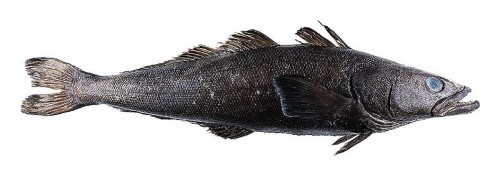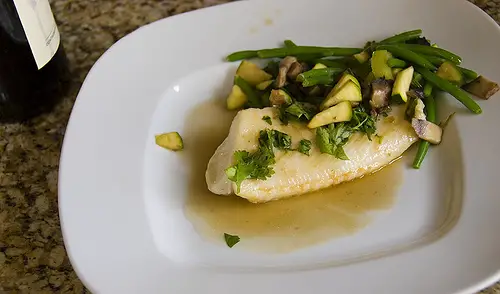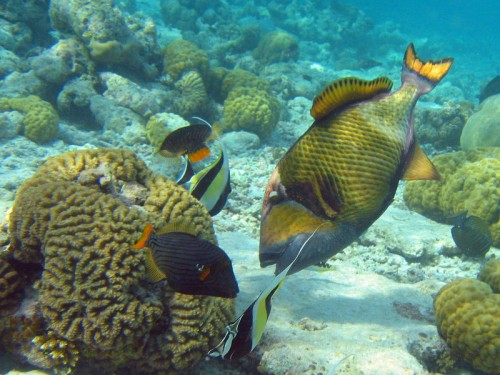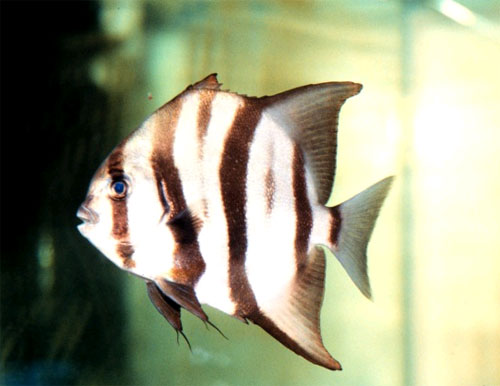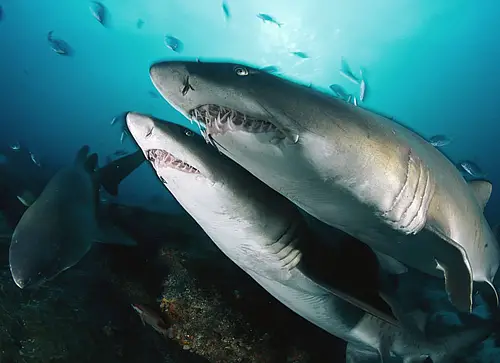Patagonian Toothfish
Also known as the Chilean sea bass, the Patagonian toothfish is found in the cold, temperate waters in the Southern Pacific, Southern Atlantic, Indian, and Southern Ocean on seamounts, continental shelves, and sub-Antarctice islands. They live at depths of about 45 m – 3,850 m.
On average, the weight of a Patagonian toothfish caught by commercial fisheries is between 9 to 10 kilograms. However, large adults can sometimes exceed a weight of 200 kilograms! Their average length is 2.3 metres, and they are thought to live up to 50 years old. They eat prawns, fish, and squid. Their predators include colossal squid, Southern elephant seals, and sperm whales.
They are a popular fish that have high commercial value. Its meat is sold under several trade names. In the USA, it is sold as Chilean sea bass. In Uruguay, Argentina, and Chile it is sold under merluza negra, and it is relatively cheap to buy. In Japan, it is sold as ‘mero’ at high prices.
According to Greenpeace and Seafood Watch, Patagonian toothfish should be avoided by consumers. Greenpeace International added this fish to its seafood red list in 2010, as they have a high risk of being sourced by unsustainable fisheries. Seafood Watch, which is more US-centric, states that Chilean sea bass should be avoided by American consumers who are sustainability minded. However, the International Union for Conservation of Nature (IUCN) which is the more reputable international organisation dedicated to natural resource conservation does not mention the Patagonian toothfish on its famous IUCN red list. However, this may be because the Convention for the Conservation of Antarctic Marine Living Resources (CCAMLR) supervises legal Patagonian toothfish harvesting.
With the help of their National Museum of History, France regulates the fishing of Patagonian toothfish in the Crozen Island and Kerguelen Islands. These are French Islands in the South Indian Ocean. In Reunion Island, fishing authorisations are only granted to a limited number of fisheries.
In Australia, the Australian Fisheries Management Authority regulates the fishing of this species. Only 2 companies are able to catch the Patagonian toothfish, and have set quotas set by the Commission for the Conservation of Antarctic Marine Living Resources. Approximately 3260 tonnes of the annual quote of 3360 tonnes is caught in Australian Antarctic waters is sold overseas, mainly to US and Japanese markets.
Illegal capture and sale of the Patagonian toothfish has led to fines and arrests. Sadly, illegal overfishing threatens this fish species in some areas because this fish grows slowly, and reaches maturity at only 10 to 12 years of age. Illegal catches can be up to 5 times the legal limit, so some researchers predict a collapse of the Patagonian toothfish fishing industry within 2 – 5 years. Some “pirate ports” such as in Mauritius and Namibia catch this fish and sell it on the black market. This is because they call it the “white gold of the Southern Ocean”, and a single sashimi-grade Patagonian toothfish can fetch as much as USD$1,000!
